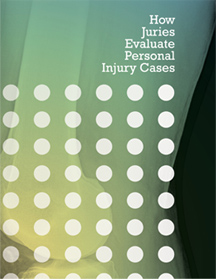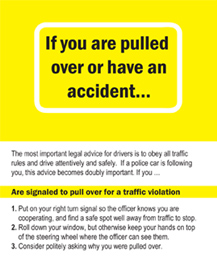Themes for opening
Trial attorneys choose themes for trial after carefully considering their client’s unique case. A good theme will reduce the case to unifying principles that are broader than the case itself. It will be simple and clear and concise. While juries usually obtain their first impression of the lawyer and his or her client before opening statement, this is still the first time the lawyer has to impress the jury with his or her client’s story. The theme is really the moral of the client’s story. It should grab the attention of the audience and set the stage for the tale the lawyer is about to tell.
The following are some examples of opening first lines that may be used to grab the jury’s attention at the beginning of an opening statement:
This is a case about [e.g., a sign].
This may work well in a case in which the attorney wants to persuade the jury to ignore all the other complexities and distractions of the trial to focus on one prime cause. It also helps to simplify that cause.
The surgery was supposed to be routine.
Such a line acts like a teaser to capture the jurors’ attention, while it is also aimed to make the jurors feel. Everyone experiences routine events, and thus, a line similar to this might remind jurors that the harmful event could happen to anyone.
The Plaintiff had a very unlucky day.
This opening may be used by a Defendant that needs to admit that bad things happened to the Defendant, but it was nothing more than bad luck—not an event caused by the Defendant.
The corporation said “trust me” when it invited Mary into its doors.
This opening line may work to draw the jury’s attention to the great trust customers place on businesses, and the corresponding obligations which businesses must meet.
Don’t let the finger pointing cause you to ignore the simple fact that [e.g., the Plaintiff was not seriously hurt.]
If one of the parties acted in a disproportionately bad way—such as by driving drunk—the opposition may be attempting to inflame the jury against the drunk driver. An opening such as this may help the jury to focus on some other facts, such as the other driver was also negligent or was not hurt very seriously. The finger pointing also may become an issue when there is more than one Defendant.
The fewer the years remaining, the more precious each one is.
At times, when an elderly or terminally ill person is severely hurt or killed, Defendants will emphasize the limited number of years remaining in the Plaintiff’s life expectancy in an effort to limit the damages. Plaintiffs would want to turn that around to make those few years seem more precious.
Napoleon Bonaparte was reported to have said, “If you wish to be a success in the world, promise everything, deliver nothing.”
This line could be used to get the jury to focus on a party’s actions who is alleged to have failed to deliver on a promise. It certainly suggests a selfish motivation and greed, and thus, may also risk being too argumentative.
The simplest explanations are often the best.
Such an opening line may help the jury to focus on a simple explanation that favors the Plaintiff or Defendant, over a far more complex explanation offered by the opposition.
Sometimes life is more painful than death.
Catastrophic injuries can be very difficult for a jury to measure. For an injured person who has severe brain damage, lives in a persistent vegetative state, or who is so severely physically injured such that death may have been more humane, then this statement may help the jurors to put the extent of the pain and suffering in perspective.



